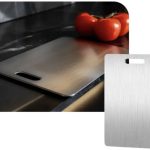The Zuwai-gani crab legs inhabits mainly on the west coast of Japan, in the Sea of Japan (to the north of Hokkaido and to the south of Tottori Prefecture), where the snow crab fishing season opens around November, and the harvest continues until around March of the following year. In some regions of Japan, the Zuwai-gani snow crab is known by a name that means the place of local origin, such as “Matsuba-gani” and “Echizen-gani”, and some of these local varieties are recognized as luxury . Seafood brands.Starting from the main body of the crab, cut the legs.
Then, cut the legs into sections in the joints, insert the scissors into the shell and remove the meat. Although removing crab meat can be cumbersome, there are very convenient tools for this in Japan. One way to further simplify the crabs cut is to remove the meat from the legs with a spoon and fork crab utensil, a tool designed specifically for this purpose. It is also convenient to have a peeler and a crab cookie on hand to break the shell.
Therefore, to experience this delicacy in all its freshness and exquisiteness, it is recommended that you try it during the winter.Throughout Japan, there are a lot of sushi restaurants and Washoku food establishments (traditional Japanese cuisine) that serve crab cuisine, including those located near fish markets and fishing grounds. An example of this is the “KaniDoraku” franchise, whose restaurants offer a wide selection of crab dishes served in an interior that offers a traditional Japanese atmosphere. “KaniDoraku” restaurants can easily be seen by their signs with a giant crab. All we can say is that if you visit Japan during the winter, it is highly recommended to try a dish of Zuwai-gani snow crab at least once.













